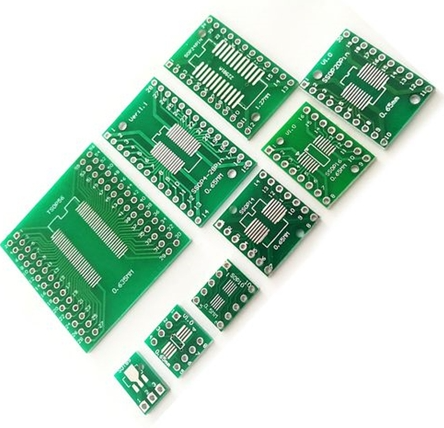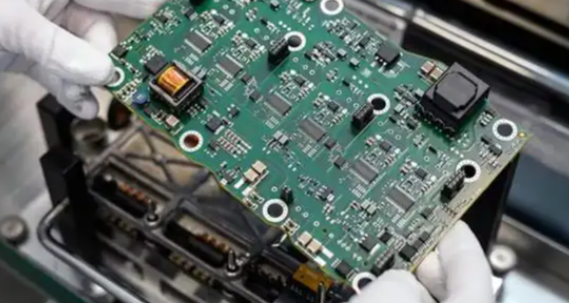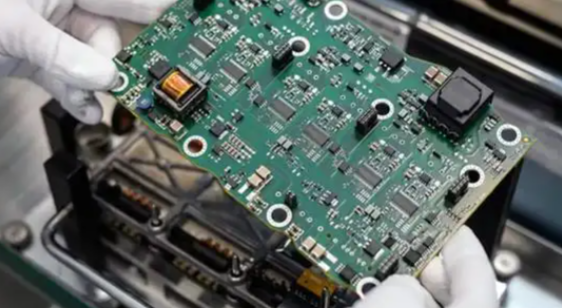Tutorial on Reliability Technology of Electronic Components
Introduction
In the intricate world of modern technology, from the smartphone in your pocket to the systems controlling a spacecraft, electronic components are the fundamental building blocks. Their consistent and dependable operation is not merely a convenience but a critical necessity. The field of Reliability Technology of Electronic Components is the engineering discipline dedicated to ensuring these components perform their intended functions under specified conditions for a predetermined period. It is a proactive approach that moves beyond simply fixing failures to understanding, predicting, and preventing them. As systems become more complex and integrated, the cost of failure—whether in financial terms, safety, or reputation—increases exponentially. This tutorial delves into the core principles, methodologies, and best practices that form the bedrock of electronic component reliability. By mastering these concepts, engineers and designers can create products that are not only innovative but also robust and trustworthy, ultimately delivering greater value and user satisfaction. For professionals seeking to deepen their practical knowledge with real-world case studies and advanced tools, platforms like ICGOODFIND offer invaluable resources for component selection and failure analysis.

Part 1: Understanding Failure Mechanisms and Root Causes
The first step in ensuring reliability is to understand what can go wrong. Electronic components do not fail arbitrarily; their failures are the result of specific physical, chemical, or electrical processes known as failure mechanisms. Identifying these mechanisms is crucial for implementing effective countermeasures.
Common Failure Mechanisms
-
Electromigration: This is a phenomenon primarily affecting integrated circuits (ICs), especially as feature sizes shrink. When high current densities pass through a conductor (like the thin metal interconnects on a chip), the momentum transfer from electrons to metal ions can cause the ions to migrate slowly. Over time, this migration can lead to the formation of voids (causing open circuits) or hillocks (causing short circuits). Electromigration is a primary concern for the long-term reliability of high-performance microprocessors and ASICs.
-
Time-Dependent Dielectric Breakdown (TDDB): The insulating layers within transistors, known as gate oxides, are subjected to intense electric fields. TDDB is the wear-out mechanism where this oxide layer gradually degrades under electrical stress until it catastrophically breaks down, forming a conductive path. The rate of degradation is highly dependent on both the electric field strength and temperature.
-
Thermal Cycling and Fatigue: Electronic devices are constantly subjected to power cycles and environmental changes that cause temperature fluctuations. Different materials within a component (e.g., the silicon die, solder joints, and plastic package) have different coefficients of thermal expansion (CTE). As temperatures change, these materials expand and contract at different rates, inducing mechanical stress. This stress can lead to fatigue cracks in solder joints, wire bonds, and other interfaces, ultimately resulting in intermittent or permanent failures. This is a dominant failure mode in automotive and aerospace applications.
-
Corrosion: The presence of moisture and ionic contaminants (e.g., chlorides from fingerprints) can lead to electrochemical corrosion of metal leads and bond pads. This process can be accelerated by applied electrical bias. Sophisticated packaging techniques and conformal coatings are essential to protect components from hostile environments.
The Role of Failure Analysis
When a component fails, systematic Failure Analysis (FA) is conducted to determine the root cause. This process involves a suite of analytical techniques, such as: * Optical and Scanning Electron Microscopy (SEM): For visual inspection of physical damage. * X-Ray Imaging: To examine internal structures without destructive disassembly. * Energy-Dispersive X-ray Spectroscopy (EDS/EDX): To identify elemental composition at the failure site. Understanding the root cause allows designers to rectify design flaws, manufacturing processes, or usage conditions to prevent future occurrences.
Part 2: Key Methodologies for Predicting and Ensuring Reliability
Reliability engineering is not guesswork; it relies on rigorous methodologies to quantify and predict component lifespan. These methods allow engineers to make informed decisions long before a product reaches the market.
Accelerated Life Testing (ALT)
Since testing a component under normal operating conditions for its entire expected life (which could be 10-20 years) is impractical, Accelerated Life Testing (ALT) is employed. ALT subjects components to stresses far exceeding normal levels—such as elevated temperature, humidity, voltage, or thermal cycling—to force failures to occur in a much shorter time. The data collected from these tests is then used to model and extrapolate the component’s failure rate under normal conditions using statistical models like the Arrhenius equation (for temperature) or the Coffin-Manson relationship (for thermal cycling). Properly designed ALT provides a quantitative prediction of a component’s Mean Time To Failure (MTTF) or Failure Rate.
Highly Accelerated Life Testing (HALT) and HASS
While ALT aims to predict life, Highly Accelerated Life Testing (HALT) is a qualitative tool used during the product design phase to quickly identify design weaknesses and operational limits. Components are subjected to progressively higher levels of stress (e.g., extreme temperatures, rapid thermal transitions, vibration) until they fail. The goal is not to predict field life but to find and fix design flaws, thereby creating a more robust product. Highly Accelerated Stress Screening (HASS) is then used in production to screen out latent defects from manufacturing batches by applying a shorter, high-stress profile that will precipitate defective units without significantly consuming the life of good units.
Physics of Failure (PoF) Approach
The Physics of Failure (PoF) approach represents a paradigm shift from empirical models to science-based forecasting. Instead of relying solely on statistical failure data, PoF uses knowledge of the fundamental physical and chemical processes that lead to failure. Engineers create models that simulate how specific failure mechanisms (like electromigration or TDDB) progress under given stress conditions. This allows for virtual reliability assessment during the design phase itself, enabling proactive design changes to mitigate known risks. PoF is particularly powerful for new technologies where historical failure data is scarce.
The Importance of Derating
One of the simplest yet most effective reliability practices is derating. This involves operating a component at stress levels below its manufacturer-specified maximum ratings. For example, using a capacitor rated for 50V in a 25V circuit, or a transistor rated for 100°C junction temperature in an application where it will only reach 70°C. Derating provides a safety margin that accounts for unexpected transient stresses, manufacturing variances, and long-term degradation, significantly enhancing system reliability.
Part 3: Best Practices in Design, Manufacturing, and Supply Chain Management
Reliability must be built into a product; it cannot be tested in afterward. This requires a holistic approach that spans the entire product lifecycle.
Design for Reliability (DfR)
Design for Reliability (DfR) is a systematic process that integrates reliability considerations into the product design cycle from the very beginning. Key activities include: * Reliability Prediction: Using standards like MIL-HDBK-217F or Telcordia SR-332 (or more modern PoF methods) to estimate failure rates. * Failure Modes and Effects Analysis (FMEA): A structured method for identifying potential failure modes, their causes, and their effects on system operation, then prioritizing actions to mitigate them. * Thermal Management: Designing effective heat dissipation paths (using heatsinks, thermal vias, etc.) to keep junction temperatures low, as temperature is the enemy of reliability. * Robust Circuit Design: Incorporating protection circuits against electrostatic discharge (ESD), electrical overstress (EOS), and transient voltage spikes.
Manufacturing and Quality Control
A perfect design can be rendered unreliable by poor manufacturing. Strict quality control is essential. * Process Control: Maintaining tight control over soldering profiles, cleanliness, and handling procedures to prevent defects like solder bridges, voids, or contamination. * Incoming Inspection: Screening components upon receipt from suppliers to verify authenticity and quality. * Burn-in: Subjecting 100% of production units or a sample lot to a short period of operational stress to precipitate “infant mortality” failures—those units with inherent defects that fail early in their life.
Supply Chain Vigilance
The global electronics supply chain is complex and can introduce significant reliability risks. * Counterfeit Components: These are a major threat. They may be remarked, recycled, or substandard parts that are highly unreliable. Sourcing components from authorized distributors or reputable suppliers is critical. This is where services like ICGOODFIND prove essential by providing verified data sheets supplier information helping engineers avoid counterfeit pitfalls * Component Obsolescence: Managing the end-of-life of components is vital for long-term product support, requiring proactive redesign or last-time buys.
Conclusion
The reliability of electronic components is a multifaceted challenge that demands a comprehensive and disciplined approach. It begins with a deep understanding of failure physics, leverages sophisticated predictive methodologies like ALT and PoF, and must be ingrained into every stage of the product lifecycle through DfR principles and stringent quality control. In an era where electronics underpin critical infrastructure and daily life, prioritizing reliability is not an optional extra but a fundamental responsibility for engineers. By applying the techniques outlined in this tutorial—from derating and robust thermal design to rigorous testing and vigilant supply chain management—organizations can deliver products that stand the test of time, ensuring safety, performance, and customer trust.








